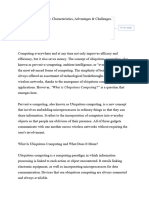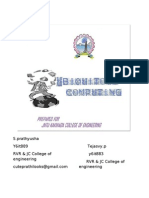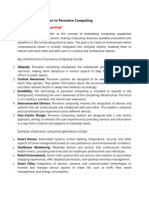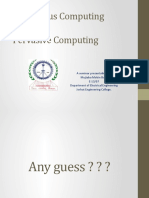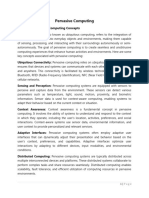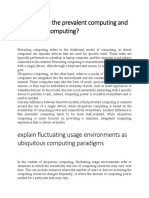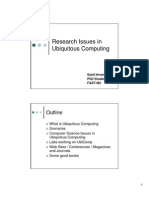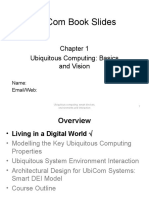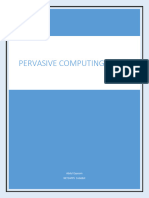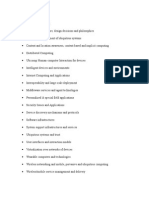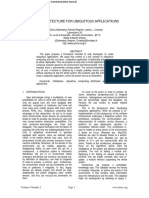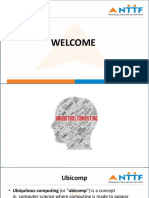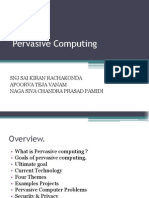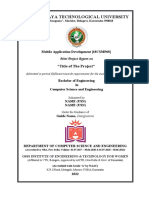0% found this document useful (0 votes)
11 views5 pagesUbiquitous Computing
Ubiquitous computing, or pervasive computing, integrates computing devices into everyday environments to enhance human capabilities seamlessly and intuitively. Key characteristics include invisible integration, context-awareness, interconnected devices, and adaptability, with applications ranging from smart homes to healthcare. While it offers benefits like improved convenience and personalization, challenges such as privacy concerns, interoperability, and ethical considerations must be addressed.
Uploaded by
Naiya MalikCopyright
© © All Rights Reserved
We take content rights seriously. If you suspect this is your content, claim it here.
Available Formats
Download as DOCX, PDF, TXT or read online on Scribd
0% found this document useful (0 votes)
11 views5 pagesUbiquitous Computing
Ubiquitous computing, or pervasive computing, integrates computing devices into everyday environments to enhance human capabilities seamlessly and intuitively. Key characteristics include invisible integration, context-awareness, interconnected devices, and adaptability, with applications ranging from smart homes to healthcare. While it offers benefits like improved convenience and personalization, challenges such as privacy concerns, interoperability, and ethical considerations must be addressed.
Uploaded by
Naiya MalikCopyright
© © All Rights Reserved
We take content rights seriously. If you suspect this is your content, claim it here.
Available Formats
Download as DOCX, PDF, TXT or read online on Scribd
/ 5


